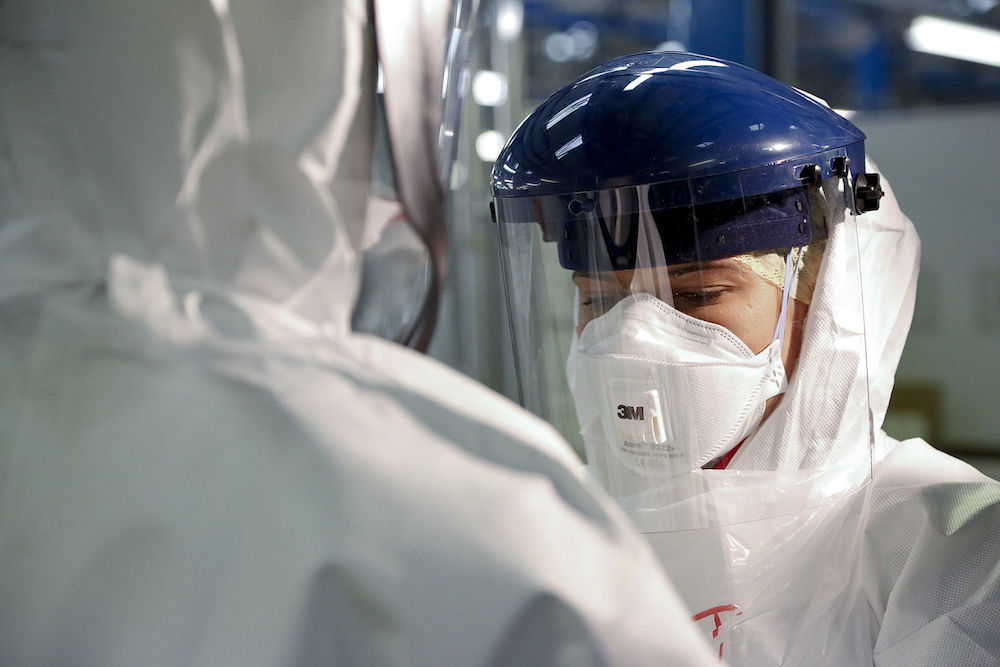
[Image above] Fabric and plastic materials are used often to create personal protective equipment. Could glass be used to create washable and reusable PPE? Credit: Simon Davis, Department for International Development (Wikimedia, CC BY 3.0)
On March 31, we put out a call to the ACerS community—How can glass and ceramic materials contribute to fighting COVID-19?
Based on that question, ACerS Fellow Edgar D. Zanotto started a discussion with other ACerS members on the possibility of making thin glass head/face masks (“face shields”) using chemically strengthened glass.
But there is one major disadvantage to using glass—it breaks. Would an ion-exchange strengthening process be effective?
“The rather high internal tension in a thin chemically strengthened glass can lead to fine shards/particles upon fracture,” Arun Varshneya, ACerS Distinguished Life Member and president of Saxon Glass Technologies, explains in an email. “You wouldn’t want the thin glass face shield to break into fine particles in front of your eyes. You wouldn’t want a hospital floor to have a zillion glass particles over a wide square footage.”
To create a successful product based primarily on chemically strengthened glass, Varshneya says you would need to control the glass’s frangibility, i.e., its tendency to break up into fragments when deformed rather than retain its cohesion.
Varshneya gives two possible approaches to controlling frangibility:
- Use an about 1.1-mm-thick sodium aluminosilicate glass such as Corning’s Gorilla type or Asahi’s Dragontrail type glass, bent hot to shape, then chemically strengthened to develop no more than about 20 MPa internal tension.
- Use an about 0.1-mm-ultrathin chemically strengthened glass, like the one in Samsung or Motorola folding display phones, which can essentially be bent at will in cold form.
In both cases, a thin polycarbonate layer laminated to the back of the glass would contain fragments in the event of a fracture. Unfortunately, the need for plastic “would cause decrease in washability and reuse,” Varshneya says.
Alternatively, scratch-resistant PET foils about 100 microns thick could be laminated to the strengthened glass, according to Guglielmo Macrelli, senior research scientist at Isoclima SpA in Italy. However, he says, “The only drawback I see is the huge cost of chemically strengthened ultra thin glass (maybe 0.5 mm) laminated in such a way.” He also suggested a post-ion-exchange thermal treatment could help “control inner tension and consequently fragmentation in chemically strengthened glass.”
So glass may not be the best material for personal protective equipment. But materials can aid in the fight against COVID-19 in other ways. The Materials Research Society held a discussion yesterday with materials researchers at the frontlines of battling the coronavirus. (A recording of the webinar is available here.)
Do you have more ideas of how ceramic and glass materials could help in the fight against COVID-19? Email your responses to bulletineditor@acersmain.wpenginepowered.com and have them featured in a future CTT.
Update 04/17/2020 – Post updated to clarify the discussion involves glass personal protective equipment that covers the head and face rather than just the nose and mouth.
